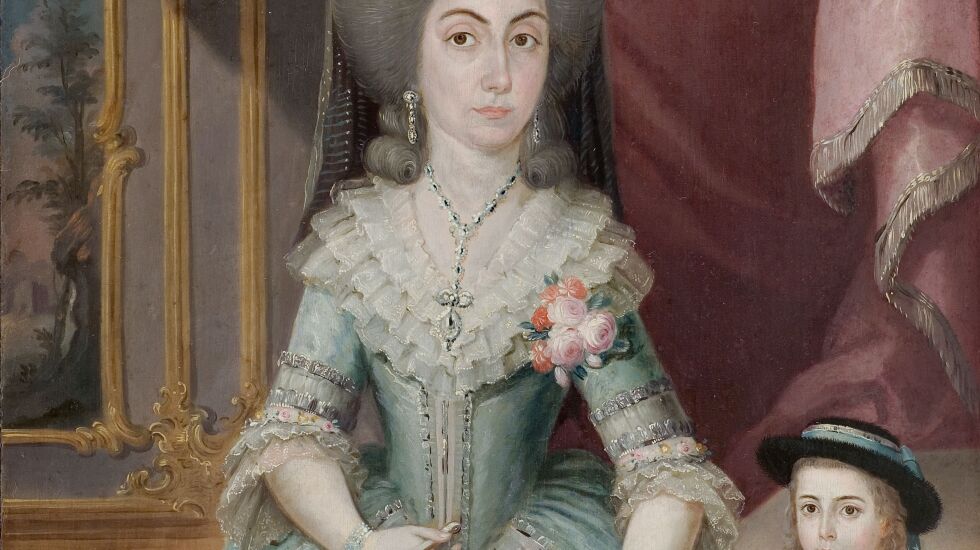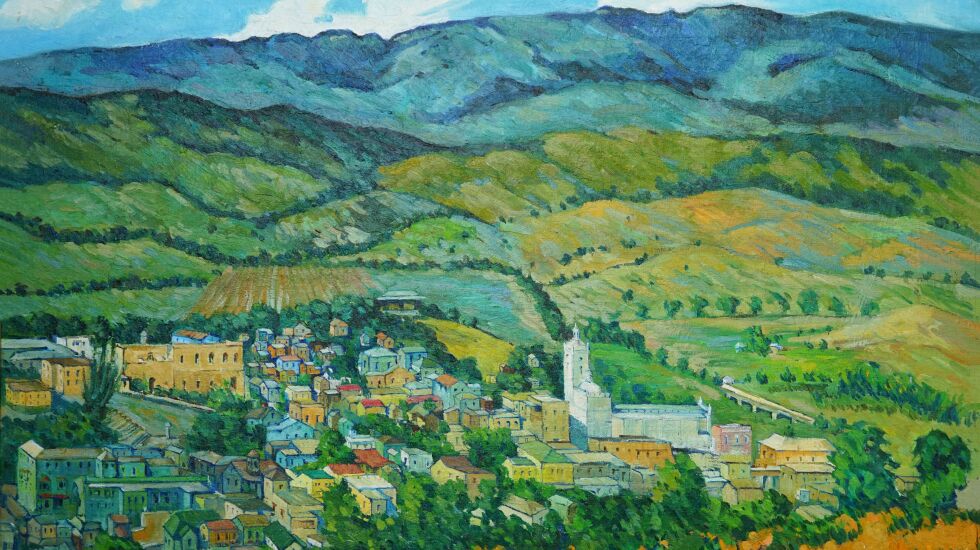
One show won’t bring instant recognition, but it can be an important step. That’s the belief behind a milestone Puerto Rican art exhibition set to open Sept. 20 at the National Museum of Puerto Rican Arts and Culture.
Titled “Nostalgia for My Island: Puerto Rican Painting from the Museo de Arte de Ponce, 1786- 1962,” it is the first show from the Puerto Rican museum to travel outside of the island and many of its 21 works have never been seen in the United States.
“I can’t wait to see it in person, and I can’t wait to hear the reaction from the public,” said Cheryl Hartup, director of the museum in the three-century-old Puerto Rican city of more than 135,000 people.
She calls the Museo the “leading art institution” in the Caribbean region. Opened in 1959, it is the oldest public art museum in Puerto Rico and it was the island’s first to be accredited by the American Alliance of Museums.
It boasts a collection of about 5,000 works, ranging from ancient art of the Americas to pieces created in the 21st century. “We’re known internationally for our European painting collection” Hartup said, “and we have a very strong Puerto Rican collection and a very solid Latin-American art collection.”
Some of the museum’s key holdings, including a few with challenging socio-political themes, were acquired the museum’s founder, Luis A. Ferré (1904-2003), a philanthropist, industrialist and former governor of Puerto Rico.
This exhibition became possible following an earthquake and a series of aftershocks that struck Ponce in early January 2020 and damaged the museum’s main building, a 1965 structure by Edward Durell Stone. The American architect’s other notable projects include the Keller Center, built two years earlier at the University of Chicago.
While the building is closed and under repair, leaders have sought other ways to showcase the museum’s holdings and raise much-needed funds, and that’s where this groundbreaking exhibition comes in.

“I started last November as director,” said Hartup, who formerly served as the museum’s chief curator, “with the mandate from the trustees of the Luis A. Ferré Foundation to travel the collection, and Chicago was at the top of the list.”
It made sense to reach out to Chicago’s National Museum, because one of its former curators now works at the Ponce museum and some of the Ferré Foundation trustees have ties to Chicago. In addition, some 150,000 Puerto Rican migrants and descendants live in the metropolitan area.
When Ponce officials contacted Billy Ocasio, the National Museum’s chief executive officer, in late 2021, he was immediately receptive to the idea of a touring exhibition. “So, that started the clock and we both got excited about doing something like this,” Ocasio said.
He suggested a Puerto Rican art show and collaborated with exhibit curator Iraida Rodríguez-Negrón to put together a selection of works from the Ponce collection built around the themes of people, landscapes and urban migration.
The show includes two of Puerto Rico’s most famous artists — José Campeche y Jordán (1751-1809) and Francisco Oller y Cestero (1833-1917). Campeche, the son of a freed slave, was active in the late 18th and early 19th centuries when Puerto Rico was still a Spanish colony.
This largely self-taught artist created primarily portraits and religious imagery, including small works on wood panels that could travel easily. Two of his works are included in this show — “Portrait of María Catalina de Urrutia” (1788-92), “The Vision of Saint Philip Benizi” (1786).
“He was the first Puerto Rican painter to produce very vivid and lasting images of San Juan and its people,” Hartup said.
She called Oller the most significant Puerto Rican painter of the 19th century. He spent two decades in Madrid and Paris and is the only Latin American painter to be associated with some of the leading French Impressionists.
In 2015-2016, the Brooklyn Museum organized a exhibition titled “Impressionism and the Caribbean: Francisco Oller and His Transatlantic World,” which explored both his European influences and his impact on Puerto Rican art. He is represented by “Hacienda Aurora” (1898), a panoramic landscape in a loosely Impressionist style, and “Still Life” (ca. 1900).

Other highlights of the exhibition, include “Barrio Tokio” (1962) by Myrna Báez, whose work is included in the collections of such prestigious museums as the Museum of Modern Art in New York, and Rafael Ríos Rey’s “Party During the Christmas Season” (1941). Rey spent time in Mexico and was influenced by some of the leading Mexican muralists, especially Diego Rivera.
In addition to heightening the profile of the Ponce museum and Puerto Rican art in general, the show is also expected to provide a big boost to Chicago’s National Museum. It has a 22-year history but did not move into its permanent building, the renovated Humboldt Park Stables and Receptory, and adopt its current name until 2014.
Ocasio calls “Nostalgia for My Island” the biggest and most important exhibition the museum has ever mounted. He estimates attendance for the show’s nearly nine-month run could reach 70,000 people, including visitors from across the country. That number is a sizable jump over the institution’s annual attendance of about 40,000 prior to the COVID-19 shutdown.
“This is to help put us on the map, so people know that we are here,” Ocasio said of the show. “And for us to be responsible to our own people as the only Puerto Rican museum in the country.”








